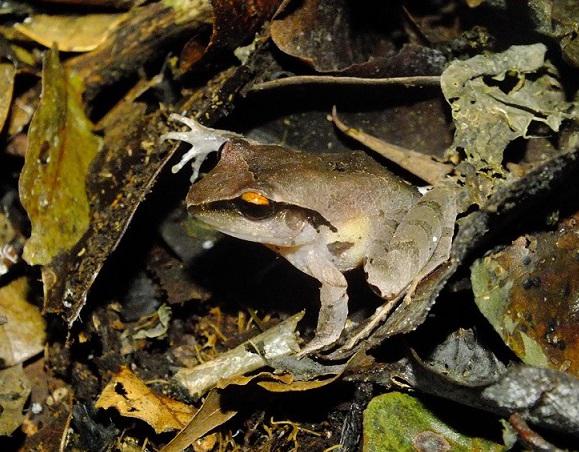Liliana Berenice García Reyes
The Area Subject to Ecological Conservation "La Pera" represents an important site that contains high richness and endemicity of amphibians. The objective of this work proposal is to strengthen the knowledge of the population of amphibian species and to evaluate in the study area the presence of Chrytrid fungus considered a threat that affects amphibians and that has influenced the decline of its populations worldwide. On the other hand, we consider the participation of communities in this project very valuable, therefore, through workshops and training courses, we aim to promote the appreciation and conservation of amphibians as well as provide tools for their study in wildlife.

Craugastor lineatus. ©Berenice García.
The Area Subject to Ecological Conservation "La Pera" is a Protected Natural Area of state competence that was decreed in 2006. It is located in the central portion of the municipality of Berriozábal, Chiapas, Mexico, covering an area of more than 7 thousand hectares. Modification and fragmentation processes are occurring in the forests of this site due to the use of resources. Nevertheless is characterized by having a conserved vegetation of high evergreen forest and subperennifolia high forest which contributea as part of a valuable continuous biological corridor with Reserva de la Biosfera the El Ocote and Parque Nacional Cañón del Sumidero.

Bolitoglossa rufescens. © Berenice García.
In La Pera there are approximately 24 species of amphibians that correspond to 24% of the total of the 100 species registered in Chiapas and of which 5 are endemic to Mexico, 2 endemic to Chiapas and restricted distribution; of these species, 12 are included in some category of risk by the IUCN Red List and NOM-059-SEMARNAT-2010, which is equivalent to 50% of the species found for the study area.
The field activities that will be carried out during this study will contribute to the generation of information not only about amphibian populations, but also about a very important risk factor for their survival, such as the presence of the fungus that has caused important declines of amphibians in other parts of the world (Batrachochytrium dendrobatidis), it will allow us to know the health of the amphibian species of the site. And undoubtedly, one aspect that we consider key to the development of the study, is the participation of community groups that perform and involve through training activities and exchange of experiences in order to strengthen the actions for the research of amphibians of La Pera. The information generated will undoubtedly influence conservation actions and likewise for long-term monitoring in the study area.